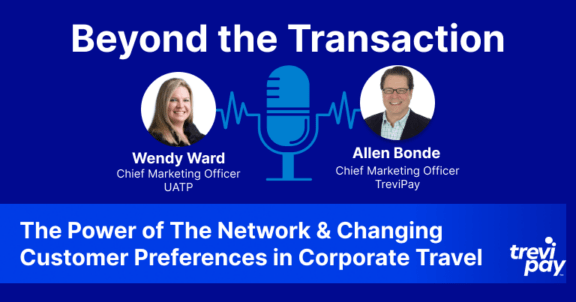Blog · Approx. 4 minute read
Felix Buehner on Automotive Digital Commerce

Meet Spryker’s Felix Buehner:
Felix Buehner is the Global Lead for Automotive and Mobility at Spryker, a leading eCommerce platform provider based in Berlin, Germany. With over five years of experience in the automotive and technology industries, Felix is a recognized expert in digital transformation and eCommerce solutions for the automotive industry.
Felix started his career in the automotive industry working for Salesforce in Germany, where he gained experience in various areas such as sales, marketing and after sales processes, focusing on digital transformation and eCommerce strategies for automotive clients.
At Spryker, Felix is responsible for driving the company’s global automotive and mobility strategy, developing innovative solutions to help automotive businesses adapt to the rapidly changing digital landscape. He is a frequent speaker and thought leader on topics related to eCommerce, digital transformation and the future of mobility.
TreviPay talked with Felix to learn about what’s on the minds of those in the automotive industry.
1. AI is a hot topic. How is AI impacting the automotive industry? And what are the positive or not-so-positive outcomes?
AI is revolutionizing the automotive industry, primarily through autonomous driving technology, predictive maintenance and advanced driver assistance systems (ADAS). Positive outcomes include increased safety, reduced traffic congestion and personalized in-car experiences. However, concerns arise regarding job displacement, the ethics of decision-making in autonomous modes and potential vulnerabilities to hacking or system failures.
AI offers significant business potential in automotive after-sales and services. Predictive maintenance algorithms can forecast part failures, allowing for proactive replacements and reducing downtimes. Natural language processing (NLP) tools enhance customer service, addressing inquiries and complaints efficiently. Chatbots can assist in scheduling services, while AI-driven analytics help dealerships personalize offers, optimize inventory and improve service recommendations. Enhanced diagnostics using AI can quickly identify and rectify issues, saving time and ensuring customer satisfaction. Overall, AI promises increased revenue streams, deeper customer engagement and operational efficiency in after-sales and services.
2. Do you see any differences between different geographies when it comes to digital commerce (for example between North America, Europe and Asia)? And are there any best practices from any of those geographies to leverage across others?
Certainly, the adoption and implementation of digital commerce in the automotive industry vary across geographies due to cultural, economic and technological differences:
- Trends: There’s a growing acceptance of buying vehicles online, supported by platforms that offer 360-degree vehicle views, virtual test drives and online financing.
- Challenges: Dealership laws in some states prevent direct online sales, necessitating innovative solutions to blend online and offline experiences.
- Emerging Trends: Integrative platforms that merge online shopping with offline test drives or vehicle pick-ups are popular. Subscription-based models for cars are also being experimented with.
- Trends: Digital sales for electric vehicle (EV) sales are strong. Green initiatives drive online platforms that highlight eco-friendly vehicles.
- Challenges: Diverse languages and regulations can make continent-wide platforms complex.
- Emerging Trends: Digital platforms focusing on sustainability, leasing options and second-hand certified vehicle sales are emerging. Some manufacturers offer direct online sales.
- Trends: In markets like China, digital commerce is highly advanced. Mobile payments and Superapps make the transition from choosing a car to purchasing it seamless.
- Challenges: Diverse markets from highly advanced (Japan, South Korea) to emerging (India, Southeast Asia) mean varied digital readiness.
- Emerging Trends: Integrating automotive sales within larger eCommerce platforms, leveraging social media influencers for sales and introducing AR/VR (Augmented/Virtual Reality) showrooms are noteworthy.
Leveraging Best Practices:
However, any best practice transfer should consider the local cultural, regulatory and economic contexts.
3. What companies in the automotive industry do you see as a front-runner when it comes to digital commerce? And what are they doing that can be adapted across the industry?
Several companies in the automotive industry are front-runners in digital commerce. Here are some standout examples:
Tesla:
BMW:
Daimler (Mercedes-Benz Passenger Cars):
Alibaba & SAIC Motor Corporation:
Volvo:
While these companies are pioneering digital commerce within the automotive sector, the core of success lies in understanding customer needs and leveraging technology to provide seamless, convenient and efficient buying experiences. These strategies, when tailored to specific markets and consumer segments, have the potential to reshape the automotive sales landscape globally.
4. What additional challenges are in the B2B space when it comes to digital commerce?
Digital commerce in the B2B space has unique challenges when compared to the B2C sector, primarily due to the complexity of transactions, products and relationships. Some of these challenges include:
To overcome these challenges, B2B organizations often need to invest in sophisticated digital commerce platforms, integrate advanced customer relationship management (CRM) tools and continuously iterate their online strategies based on feedback and evolving market conditions.
A best practice is to follow a best-of-breed approach instead of a best-of-suite approach, as the complexity within these different platforms is better covered with specialized solutions for commerce, CRM, CPQ and others.
Ready to learn more about the challenges the automotive industry faces?
Check out Spryker’s “5 Expert Voices on the Future of Digital Commerce for the Automotive Industry”
Stay up-to-date with the latest from TreviPay
Thank you for subscribing! You will now receive email updates from TreviPay.


